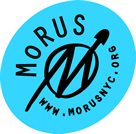I Visited The Museum of Reclaimed Urban Space, and So Should You
NYU Local
September 12th, 2014
Emily Roche
https://nyulocal.com/i-visited-the-museum-of-reclaimed-urban-space-and-so-should-you-9aec8f1400b8
The East Village is a place constantly in flux. From the closing of El Sombrero to the rising cost of living and new subway lines, it’s safe to say that the East Village is undergoing a period of serious transformation.
These changes, like all changes, have both positive and negative impacts. On one hand, crime continues to fall in the East Village, and the neighborhood is now home to dozens of small bakeries, cafes, bars, and bookstores that didn’t exist twenty years ago.
But the negative face of development — and gentrification — can’t be ignored. The Museum of Reclaimed Urban Space (MoRUS) is trying to make sure that the negative impacts of encroaching gentrification aren’t ignored by the city at large by preserving the legacy of activism that has helped to keep the city a home and a community for its residents.
The museum itself is small — two floors, each comprised of a single room. But it holds countless stories, and its goals are far-reaching. According to the MoRUS website, it “is a volunteer-run small history museum of grassroots activism…[that tells] the story of efforts to create community spaces on the Lower East Side, especially efforts that “reclaim” space that has been taken over by city bureaucracies or corporations.”
Upstairs, there’s a variety of zines, apparel, and other merchandise for sale, the proceeds of which help to fund this volunteer-run museum. Downstairs, one can find a small theater playing footage of different protests and rallies from New York City’s long history of activism, with focus on attempts to gain and preserve bike rights, green space, and squatting rights. There’s a wall with photographs of historical squatters’ spaces, as well as a corner for preserving the history of Occupy Wall Street in Zucotti Park: MoRUS owns the original bike energy generator that was used to charge electronics and fuel the kitchen during the initial 2011 occupation.
While browsing the museum, I had the chance to speak with the executive director of Time’s Up, a local environmental organization and education group that focuses on grassroots activism and education to work towards city-wide sustainability.
Bill DiPaola, who also volunteers at MoRUS, told me that the museum is a valuable site because “people need to know their real history…a positive, activist side of history.” We both acknowledged that the NYU community doesn’t always have a fabulous reputation for preserving the local gardens and cultures, but DiPaola did give me some advice to pass on for those who might be interested in getting involved: “activism is a sharp sword that we use to pierce the corporate ways. NYU needs to help us sharpen that sword, not dull it.”
Some specifics he gave as to how to further the pursuit of local grassroots campaign include volunteering and getting involved in any way. MoRUS or Time’s Up are both in need of volunteers, so they’re great places to start. You can check out their online calendar for events, marches, and other projects, including Time’s Up’s monthly community clean up days (they fall on the second Saturday and the first Sunday of each month).
You already live in this fine city — why not lend a hand in preserving it?
